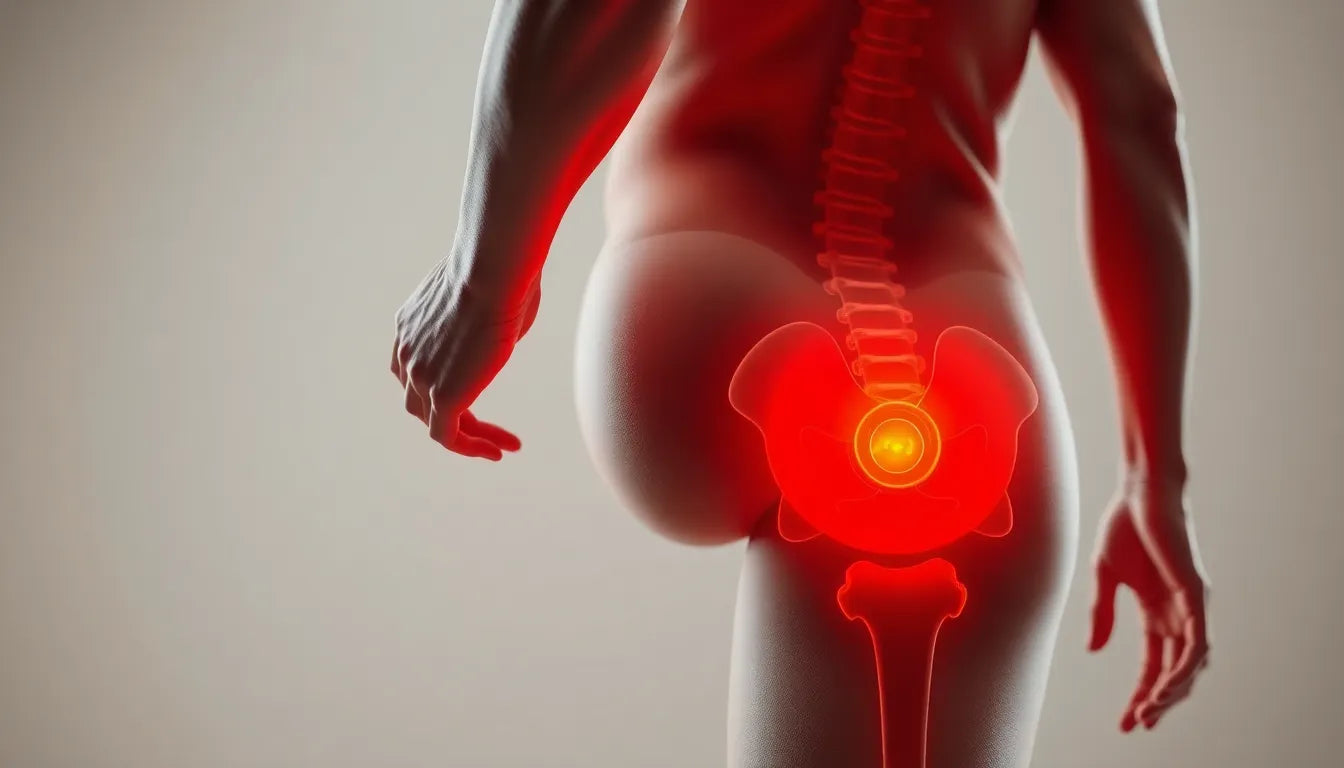Understanding the intricacies of the menstrual cycle is crucial for many women, especially when it comes to identifying and managing discomforts such as ovulation pain. Ovulation, a key phase in the menstrual cycle, involves the release of an egg from the ovary and occurs roughly in the middle of the cycle. While this process is a natural and necessary part of fertility, it can sometimes come with its own set of challenges, notably pain known as *mittelschmerz*. This German term translates to "middle pain," aptly describing the sensation some women experience during ovulation.
*Mittelschmerz* is typically characterized by a sharp or cramp-like pain on one side of the lower abdomen, corresponding to the ovary releasing an egg. While this discomfort is common, some women report experiencing pain in the lower back during ovulation. Although not as prevalent as abdominal pain, lower back pain during this phase can be quite bothersome and is a reality for many women.
The importance of awareness
Understanding the causes and implications of ovulation-related back pain is essential for maintaining women's health. Recognizing these symptoms can help women differentiate between normal ovulation discomfort and potential signs of more serious conditions. By increasing awareness, women can take proactive steps in managing their health and seeking appropriate medical advice when necessary.
This blog post will delve into the various aspects of experiencing lower back pain during ovulation. We will explore the underlying causes, typical symptoms, and effective management strategies to alleviate discomfort. By the end of this post, you will have a clearer understanding of how to address and manage this specific type of pain, ensuring that it does not interfere with your daily life.
Recognizing the importance of informed health decisions, we aim to equip you with the knowledge you need to navigate these monthly occurrences confidently. Whether you are experiencing mild discomfort or more intense pain, understanding your body’s signals is the first step towards effective management and relief.
Causes of lower back pain during ovulation
Understanding the physiological processes behind ovulation can help clarify why some women experience lower back pain during this phase. Ovulation occurs when an egg is released from the ovary, a process that can sometimes cause discomfort. This discomfort, often referred to as mittelschmerz, is due to the stretching and rupture of the ovarian follicle, which can lead to minor bleeding. This bleeding and the subsequent irritation of the peritoneum—the lining of the abdominal cavity—can cause pain that radiates to the lower back or even the legs.

Lumbar support belt
Provides stabilisation and targeted relief for lower back pain; adjustable for personalized support.
While abdominal pain is more commonly associated with ovulation, lower back pain can occur as well, mimicking the sensation of menstrual cramps. This is because the nerve pathways in the pelvis and lower back are interconnected, allowing pain to manifest in multiple areas. Although not all women will experience this type of pain, for those who do, it can be a significant inconvenience, affecting daily activities and overall quality of life.
Symptoms and differentiation from other conditions
Recognizing the symptoms of ovulation-related pain is crucial for distinguishing it from other potential health issues. Typical symptoms of ovulation include:
- Abdominal pain or cramping, often on one side
- Changes in vaginal discharge, which may become more slippery and clear
- A slight increase in basal body temperature
- Increased libido
- Tender breasts or slight spotting
While these symptoms are generally considered normal, it is important to differentiate them from signs of more serious conditions, such as endometriosis. Endometriosis can cause severe and persistent lower back pain, alongside other symptoms like heavy menstrual bleeding and chronic pelvic pain. If you experience intense or long-lasting pain, it is advisable to seek medical evaluation to rule out such conditions.
Visual aid: symptom comparison table
To help differentiate between normal ovulation pain and symptoms of endometriosis, the following table provides a comparison:
| Symptom | Normal Ovulation Pain | Endometriosis |
|---|---|---|
| Abdominal Pain | Sharp or cramp-like, short duration | Chronic, intense pain |
| Lower Back Pain | Occasional, mild to moderate | Severe, persistent |
| Vaginal Discharge | Clear, slippery | May vary, often not a symptom |
| Other Symptoms | Mild breast tenderness, increased libido | Heavy bleeding, bowel issues |
By understanding these symptoms and their implications, women can better manage their health and seek appropriate medical advice when necessary. In the next section, we will explore practical strategies for relieving ovulation-related back pain and when to consult a healthcare provider.
Relief and treatment options for ovulation-related back pain
Managing lower back pain during ovulation involves a combination of practical strategies and lifestyle adjustments. One effective method is the use of heat therapy, such as applying a heating pad or taking a warm bath. This helps to relax the muscles and can significantly reduce discomfort. Over-the-counter pain relief options, like ibuprofen, can also be beneficial. However, it's important to use these medications as directed and consult a healthcare provider if the pain is severe or persistent.

Women's Posture Shirt™ - Black
Supports posture, relieves pain, and stimulates muscles for upper and lower back relief.
In addition to these immediate relief strategies, incorporating regular exercise and stress management techniques into your routine can help mitigate pain over time. Exercises that strengthen the core and improve flexibility, such as yoga or Pilates, can be particularly helpful. Furthermore, maintaining a balanced diet and staying hydrated are essential for overall health and can contribute to reducing ovulation-related discomfort.
When to seek medical advice
While occasional lower back pain during ovulation is typically not a cause for concern, there are instances where medical consultation is necessary. If the pain is severe, lasts beyond the ovulation period, or is accompanied by other unusual symptoms, it is crucial to seek professional medical advice. Persistent pain could indicate more serious conditions such as endometriosis, which requires a thorough evaluation and appropriate treatment.
Interactive element: personal tracking guide
Keeping a symptom diary can be an invaluable tool for understanding your body's patterns and identifying potential triggers for ovulation-related back pain. By tracking symptoms, their intensity, and duration, you can gain insights into your menstrual cycle and discuss these findings with your healthcare provider. This proactive approach not only aids in managing pain but also enhances communication with medical professionals, leading to more tailored and effective treatment plans.
Frequently asked questions
What is the main cause of ovulation-related back pain?
The primary cause of back pain during ovulation is the release of an egg from the ovary, which can lead to minor bleeding and irritation of the peritoneum. This irritation can cause pain that radiates to the lower back.
How can I tell if my back pain is due to ovulation or something more serious?
While ovulation-related pain is typically mild and short-lived, persistent or severe pain may indicate a more serious condition such as endometriosis. If you experience prolonged discomfort or additional symptoms like heavy bleeding, it is advisable to consult a healthcare provider for a thorough evaluation.
What are the best home remedies for managing this pain?
Effective home remedies include applying heat to the affected area, taking warm baths, and using over-the-counter pain relief medications like ibuprofen. Regular exercise and stress management techniques can also help reduce discomfort over time.
Should I be worried if the pain persists beyond ovulation?
If the pain continues beyond the ovulation period or is severe, it is important to seek medical evaluation. Persistent pain could be a sign of an underlying condition that requires medical attention.
Can lifestyle changes help reduce ovulation pain?
Yes, lifestyle changes such as regular exercise, stress management, and maintaining a balanced diet can help reduce ovulation-related pain. These changes promote overall health and can alleviate discomfort during the menstrual cycle.
Kilder
- Matas. (n.d.). "Ægløsning." Matas Stories.
- Libresse. (n.d.). "Hvad er ægløsning?" Libresse.
- Region Midtjylland. (n.d.). "Endometriose viser sig meget forskelligt." Region Midtjylland.
- Nørmark Ryg. (n.d.). "Endometriose." Nørmark Ryg.
- Rahbek KST. (n.d.). "Når du får smerter og anden symptomforværring ved menstruation og ægløsning." Rahbek KST.
- Sundhed.dk. (n.d.). "Underlivssmerter." Sundhed.dk.


















